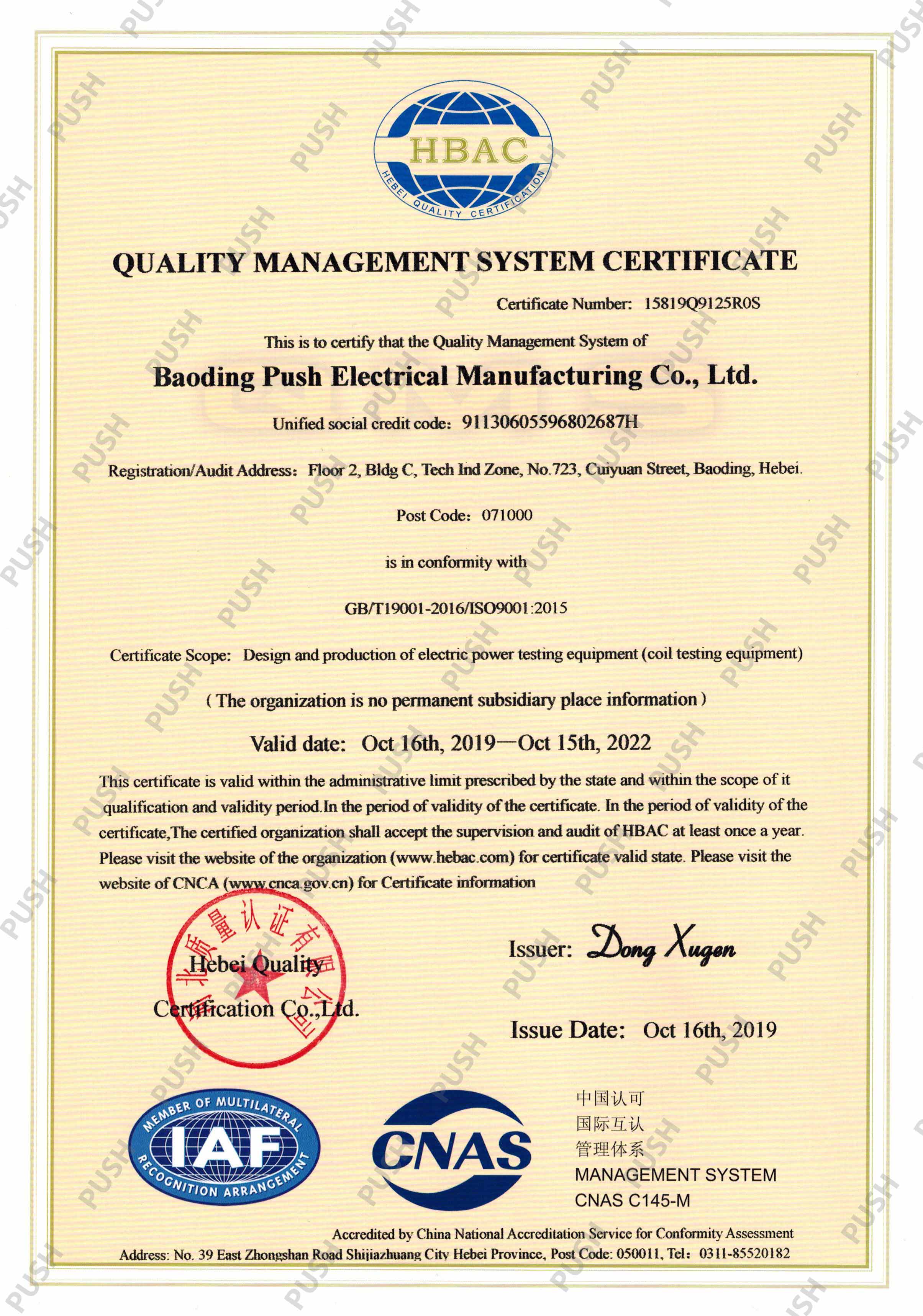 English
English


oil dielectric tester
Understanding Oil Dielectric Testers Ensuring Electrical Insulation Integrity
In the realm of electrical testing, the oil dielectric tester is an essential tool designed to measure the dielectric strength of insulating oils used in transformers and other electrical equipment. This testing process is crucial for determining the capability of the insulating fluid to resist electrical breakdown, thereby ensuring the safety and reliability of electrical systems.
What is a Dielectric Tester?
A dielectric tester is an instrument used to evaluate the dielectric properties of materials, commonly insulating oils. These testers apply a high voltage to the insulating oil, measuring the point at which the oil fails and allows electrical conduction. This failure point, known as the dielectric strength, is a critical parameter that indicates the quality and performance of the oil.
Importance of Oil Dielectric Testing
Insulating oils serve as crucial components in electrical equipment, primarily in transformers. They provide insulation and also have cooling properties. Over time, these oils can degrade due to various factors, including heat, moisture, and the presence of contaminants. This degradation can lead to decreased dielectric strength, increasing the risk of electrical failures, short circuits, or catastrophic equipment failures.
Regular testing of insulating oils is, therefore, necessary to ensure that they still provide adequate protection. A routine dielectric strength test can help predict potential failures and allow for maintenance actions before serious problems occur, ultimately prolonging the life of the equipment.
The Testing Process
The oil dielectric testing process involves several key steps
oil dielectric tester

1. Sample Collection A representative sample of the insulating oil is collected for testing. It is critical to ensure that the sample is free from contaminants that could affect the results.
2. Preparation The sample is placed in a testing vessel, which is designed to avoid electrical disturbances. The vessel must be clean and dry to prevent erroneous readings.
3. High Voltage Application The dielectric tester applies a gradually increasing voltage to the oil sample. The voltage is raised to a predefined level, and the time to breakdown is measured.
4. Determination of Dielectric Strength The voltage at which breakdown occurs is recorded as the dielectric strength of the oil. This measurement helps in assessing whether the oil meets the required standards for effective insulation.
5. Result Analysis The results are compared against industry standards and historical data to evaluate the condition of the oil.
Industry Standards
Organizations such as the American Society for Testing and Materials (ASTM) and the International Electrotechnical Commission (IEC) provide guidelines and standards for oil dielectric testing. These standards outline necessary procedures, equipment specifications, and safety protocols to ensure accurate and reliable results.
Conclusion
In conclusion, oil dielectric testers play a vital role in the maintenance of electrical equipment and the safety of power systems. By regularly assessing the dielectric strength of insulating oils, engineers and technicians can prevent unexpected failures and extend the operational life of transformers and other critical components. As electrical demands continue to grow, the importance of reliable insulation and the effectiveness of dielectric testing cannot be overstated. By investing in regular oil testing, organizations can maintain operational efficiency and ensure the safety of their electrical systems.
-
Differences between open cup flash point tester and closed cup flash point testerNewsOct.31,2024
-
The Reliable Load Tap ChangerNewsOct.23,2024
-
The Essential Guide to Hipot TestersNewsOct.23,2024
-
The Digital Insulation TesterNewsOct.23,2024
-
The Best Earth Loop Impedance Tester for SaleNewsOct.23,2024
-
Tan Delta Tester--The Essential Tool for Electrical Insulation TestingNewsOct.23,2024





